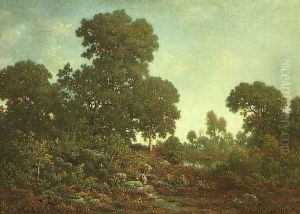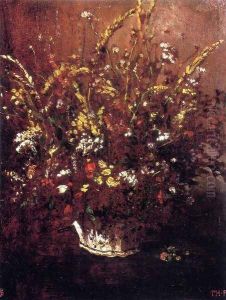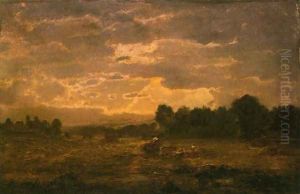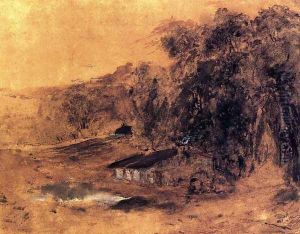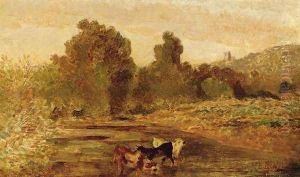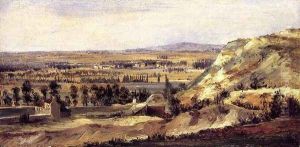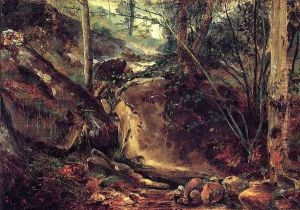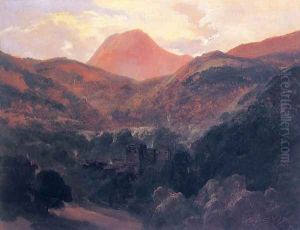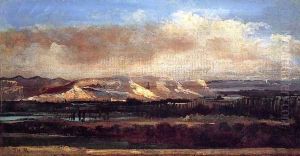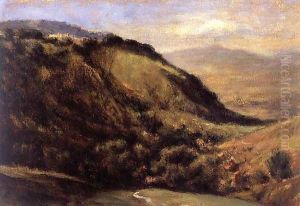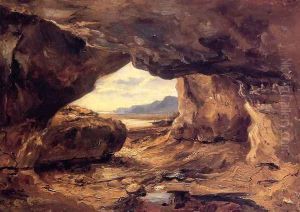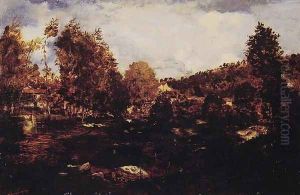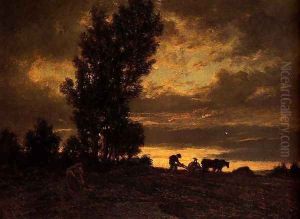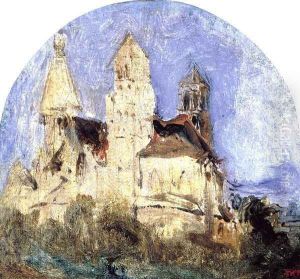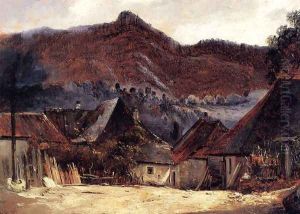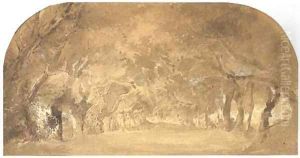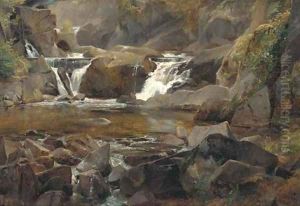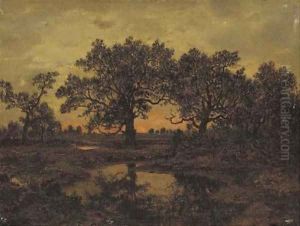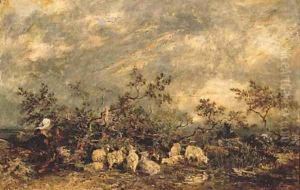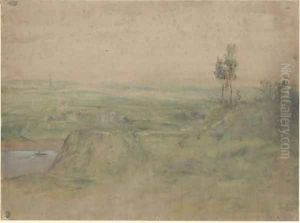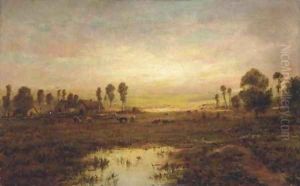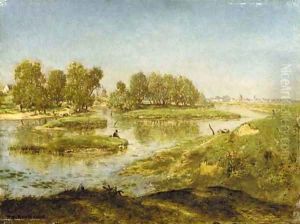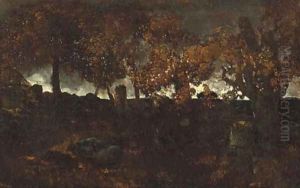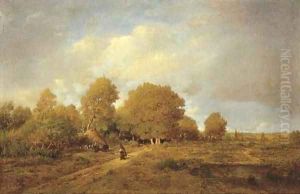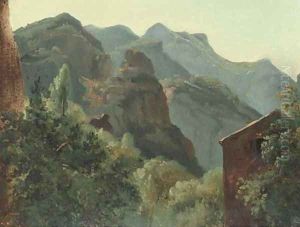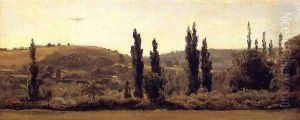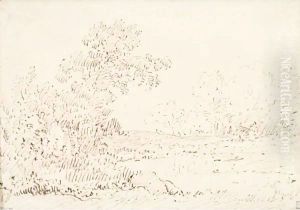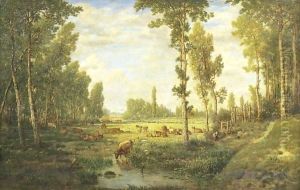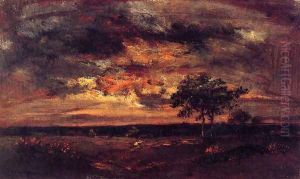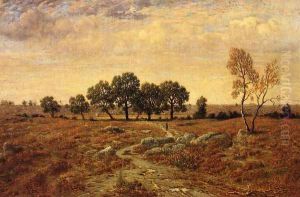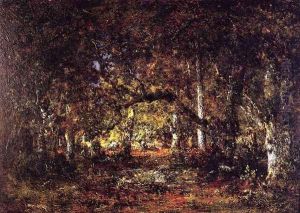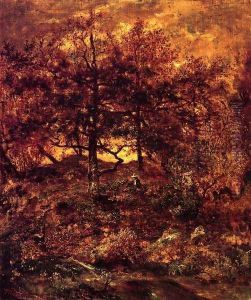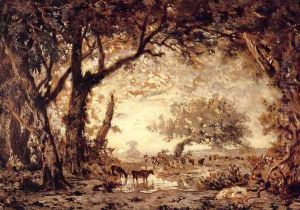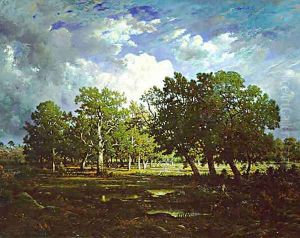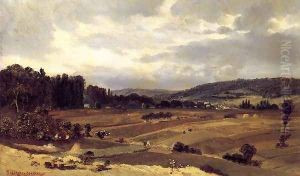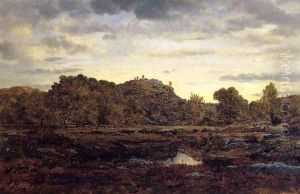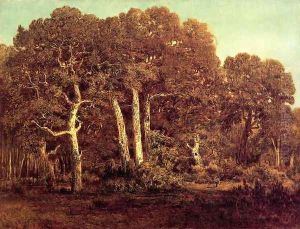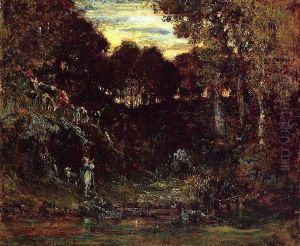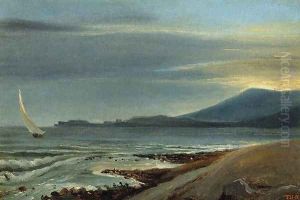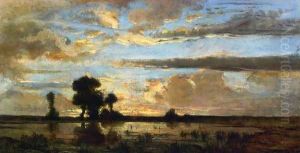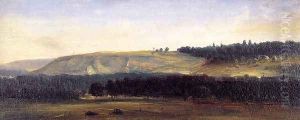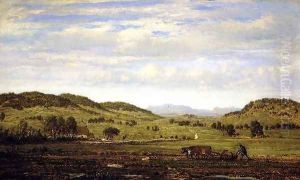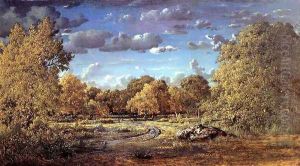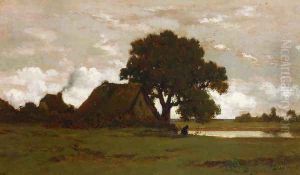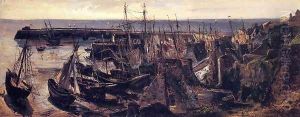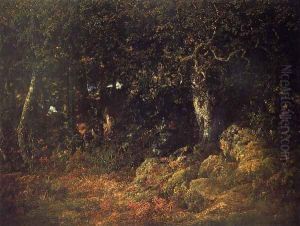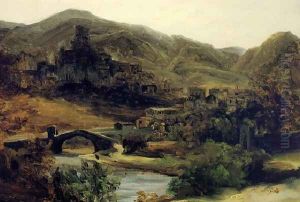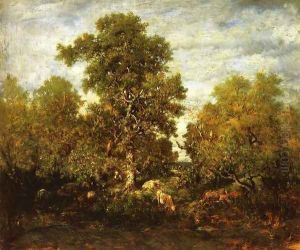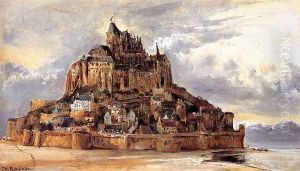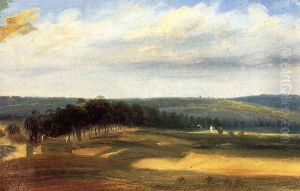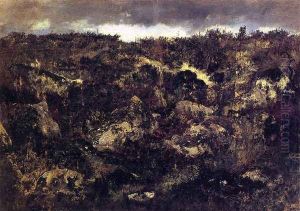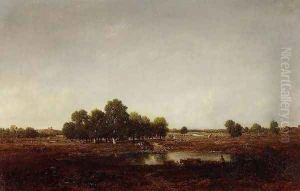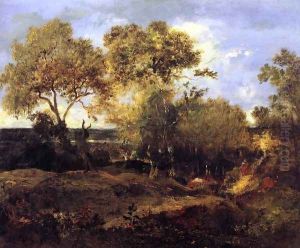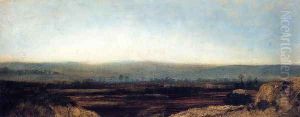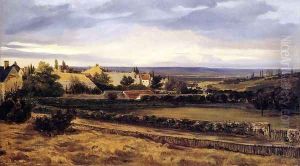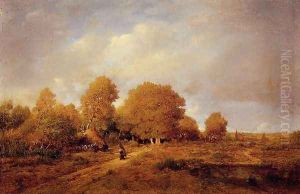Etienne-Pierre Theodore Rousseau Paintings
Étienne-Pierre Théodore Rousseau was a pivotal figure in the French art movement known as the Barbizon school, which emphasized painting nature and rural scenes directly from life, a precursor to the Impressionists who would later revolutionize the art world. Born on April 15, 1812, in Paris, Rousseau showed an early interest in drawing and painting. His parents were tailors, and they initially hoped he would pursue a career in law, but Rousseau's passion for art was undeniable.
Rousseau received his early artistic training from a variety of masters, starting with Guillon-Lethière. However, he was largely self-taught and spent much of his time studying in the Louvre, where he was influenced by the works of artists such as Camille Corot and the landscape painters of the Dutch and French schools. He began exhibiting at the Paris Salon in 1831 but faced rejection in the years following due to the unconventional nature of his work.
Determined to pursue his vision, Rousseau left for the French countryside and settled in the village of Barbizon near the Fontainebleau Forest. There he found inspiration in the natural surroundings and became a central figure in the Barbizon school, which sought to capture the transient effects of light and atmosphere in their work. He painted scenes of the forest and surrounding areas, focusing on the changing seasons and times of day to evoke mood and emotion.
Despite his talent, Rousseau's work was not well-received by the art establishment of his time. He was often met with official disapproval and was even denied medals and honors at the Salon. It wasn't until 1849 that he received recognition with the Salon jury accepting two of his works, and in 1851, he was awarded a second-class medal.
In his later years, Rousseau's reputation improved significantly, and his influence among younger artists grew. He mentored several painters who would go on to become famous in their own right, including Jean-François Millet. Rousseau's health began to decline in the 1860s, and he passed away on December 22, 1867, in Barbizon. Today, he is recognized as a forerunner of the Impressionist movement and one of the most important landscape painters of the 19th century. His works are held in major museums around the world, and his contribution to art continues to be celebrated.
